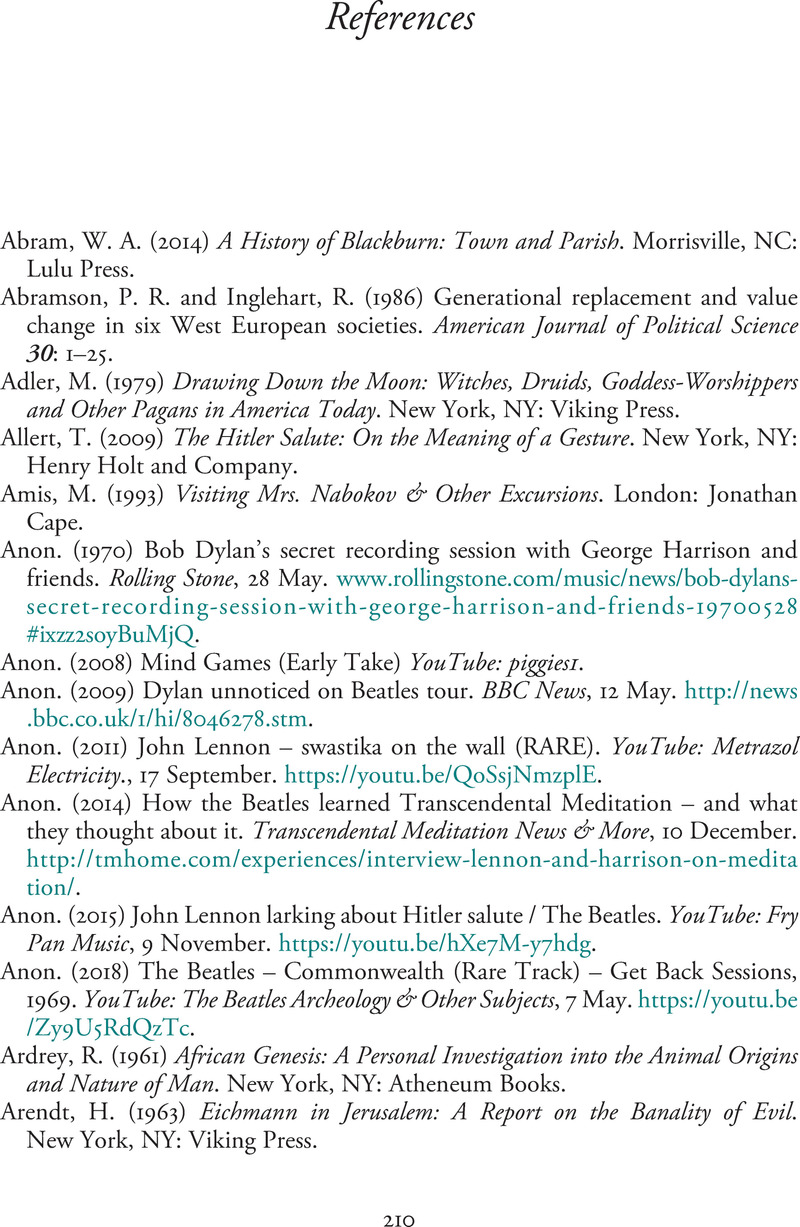Book contents
- Dylan, Lennon, Marx and God
- Dylan, Lennon, Marx and God
- Copyright page
- Dedication
- Contents
- Figures
- Tables
- Preface
- Acknowledgements
- Chapter 1 Introduction
- Chapter 2 Dylan, Lennon and Dual Biography
- Chapter 3 Dylan, Lennon and Anti-War Protest Music
- Chapter 4 John Lennon and History
- Chapter 5 Bob Dylan and History
- Chapter 6 Dylan, Lennon and Spirituality
- Chapter 7 Conclusion
- Book part
- References
- Index
- References
References
Published online by Cambridge University Press: 02 February 2022
- Dylan, Lennon, Marx and God
- Dylan, Lennon, Marx and God
- Copyright page
- Dedication
- Contents
- Figures
- Tables
- Preface
- Acknowledgements
- Chapter 1 Introduction
- Chapter 2 Dylan, Lennon and Dual Biography
- Chapter 3 Dylan, Lennon and Anti-War Protest Music
- Chapter 4 John Lennon and History
- Chapter 5 Bob Dylan and History
- Chapter 6 Dylan, Lennon and Spirituality
- Chapter 7 Conclusion
- Book part
- References
- Index
- References
Summary

- Type
- Chapter
- Information
- Dylan, Lennon, Marx and God , pp. 210 - 234Publisher: Cambridge University PressPrint publication year: 2021



